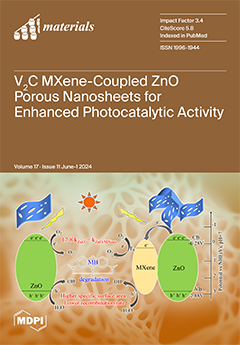Compound contamination of soil with heavy metals copper (Cu) and lead (Pb) triggered by mining development has become a serious problem. To solve this problem, in this paper, corncob kernel, which is widely available and inexpensive, was used as the raw material of
[...] Read more.
Compound contamination of soil with heavy metals copper (Cu) and lead (Pb) triggered by mining development has become a serious problem. To solve this problem, in this paper, corncob kernel, which is widely available and inexpensive, was used as the raw material of biochar and modified by loading CaAl-layered double hydroxides to synthesize biochar-loaded CaAl-layered double hydroxide composites (CaAl-LDH/BC). After soil remediation experiments, either BC or CaAl-LDH/BC can increase soil pH, and the available phosphorus content and available potassium content in soil. Compared with BC, CaAl-LDH/BC significantly reduced the available content of Cu and Pb in the active state (diethylenetriaminepentaacetic acid extractable state) in the soil, and the passivation rate of Cu and Pb by a 2% dosage of CaAl-LDH/BC reached 47.85% and 37.9%, respectively. CaAl-LDH/BC can significantly enhance the relative abundance of beneficial microorganisms such as
Actinobacteriota,
Gemmatimonadota, and
Luteimonas in the soil, which can help to enhance the tolerance and reduce the enrichment ability of plants to heavy metals. In addition, it was demonstrated by pea seedling (
Pisum sativum L.) growing experiments that CaAl-LDH/BC increased plant fresh weight, root length, plant height, catalase (CAT) activity, and protein content, which promoted the growth of the plant. Compared with BC, CaAl-LDH/BC significantly reduced the Cu and Pb contents in pea seedlings, in which the Cu and Pb contents in pea seedlings were reduced from 31.97 mg/kg and 74.40 mg/kg to 2.92 mg/kg and 6.67 mg/kg, respectively, after a 2% dosage of CaAl-LDH/BC, which was a reduction of 90.84% and 91.03%, respectively. In conclusion, compared with BC, CaAl-LDH/BC improved soil fertility and thus the plant growth environment, and also more effectively reduced the mobility of heavy metals Cu and Pb in the soil to reduce the enrichment of Cu and Pb by plants.
Full article






